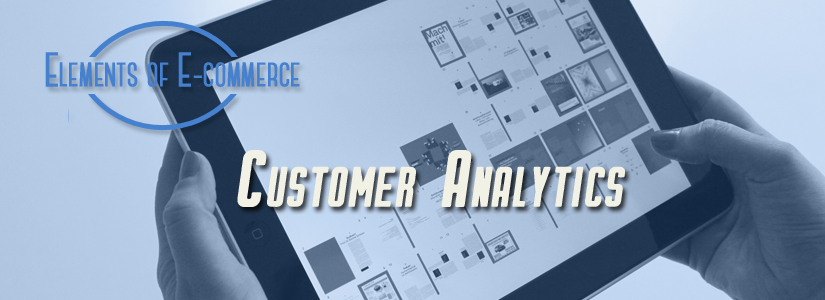
Elements of E-Commerce | Customer Analytics
Welcome to Thanx Media’s “Elements of E-Commerce” blog series. Follow along as we wade through the nuts and bolts of e-commerce technologies that you need to know.
Today we’re taking a look at customer analytics. The first step is orienting ourselves with the what and where. Over the next few posts, we’ll dive deeper to start unpacking the bigness of Big Data.
What are Customer Analytics?
It’s not just having all the data, but using the data that we have on our customers. Customer analytics track customer demographics and the various touchpoints that connect a customer to a product or service. Instead of tracking general sales numbers following a marketing campaign, we should now track and analyze data on how specific customers interact with that campaign.
When done right, analytics offer insights that let us target products and offers to the most interested customers and show us what customers need to feel they received good service.
Where does the Data Come From?
Everywhere—there are more sources of data than there are people. Really. By 2008, the number of internet-enabled devices had outpaced the number of people in the world; and those devices keep multiplying. And in addition to the connection that the Internet brings, there are all the old connection points to keep track of as well.
So when beginning a plan for customer analytics, the first step is to identify all of the places that you can get information about your customers. Most B2B and B2C e-retailers can look to these:
1. Website traffic, including:
⋅ Number and frequency of visitors.
⋅ Visitor geographic locations.
⋅ Time spent on the site by visitors.
⋅ Popular pages, and the most used or unused parts of a website.
⋅ Individual visitor navigation—the pages visited by particular visitors, frequent/repeated navigation tasks, length of visits.
⋅ Time spent browsing before completing a purchase.
⋅ Cart abandonment rates, in general and visitor-specific.
2. Social media engagement, including:
⋅ Post-specific or campaign-specific views, engagements, and shares.
⋅ Click-throughs and conversion rates.
⋅ Follower acquisition and churn rate.
⋅ Chatter by other social media users referring to your company—positive and negative sentiments, referrals.
⋅ Social media influencers most followed by your customers, or by your target demographics.
3. Internet noise—references to your company by other websites and blogs. Track:
⋅ Click-throughs and conversions.
⋅ Positive or negative sentiment.
⋅ Internet influencers most followed by your target demographic
4. Search results—internet keywords and typical searches that lead to your company.
5. Email interaction, including
⋅ Contact signups, including for offers and newsletters.
⋅ Opened and engagement rates for emails.
⋅ Click-throughs and conversions.
6. Other customer contacts, including:
⋅ Help/support calls, emails and chats.
⋅ Customer loyalty engagement, use, and service requests.
7. Offline advertising responses, including:
⋅ Sales following direct mail campaigns, sometimes tracked by campaign-specific offer codes.
⋅ Sales following TV/print ads.
8. Customer surveys and feedback, on- and offline.
Obviously, there is almost endless information. With the right tools to sort and gather, and the right integration between your tools to track individual customer results, you’ll be able to narrow your focus into usable areas of this data. Come back next time and we’ll continue to unpack how to sort through it all.

